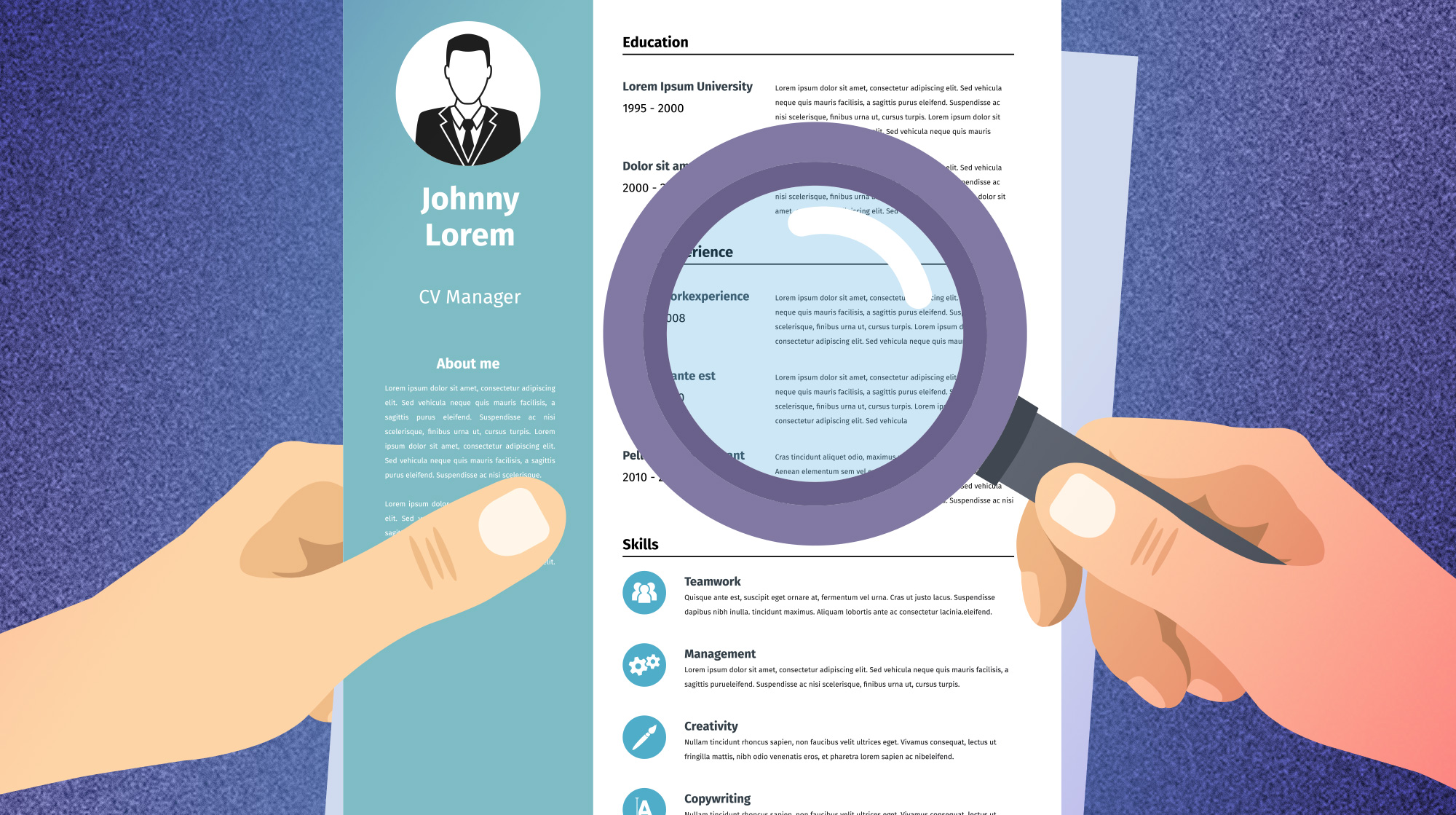Career resources content posted on NEJM CareerCenter is produced by freelance health care writers as an advertising service of NEJM Group, a division of the Massachusetts Medical Society and should not be construed as coming from, or representing the views of, the New England Journal of Medicine, NEJM Group, or the Massachusetts Medical Society
Customization and confidentiality are key considerations in the current recruiting marketplace
A physician’s curriculum vitae (CV) has long functioned as a passport of sorts into the realm of potential practice opportunities, which is why physicians must make sure that the all-important document does well what it’s intended to do: provide a comprehensive but succinct and completely accurate overview of your medical training, work, and accomplishments, in a format that’s easy to read and digest. Today, however, when everything moves at, well, cyberspeed, physicians should be prepared to respond in near real time when a desirable opportunity comes up — by not only submitting a polished document but by also ensuring that the CV is tailored to the position, according to Peter Angood, MD, chief executive officer of the American Association for Physician Leadership.
“It’s important for physicians to customize their CV each time they submit it, to ensure they’re including the appropriate keywords,” Dr. Angood said, to match qualifications the organization is seeking in a candidate. “Remember that you’re trying to get through the initial screening, so the CV keywords should ideally match those in the job position.”
That screening, these days, often includes computer technology that ingests, “scrapes,” and dissects the document via machine learning, artificial intelligence, and other mechanisms to identify specific experience or specialization. Because this process typically occurs before the document is routed for human review, the CV should include keywords included in the job description, Dr. Angood said. The idea is to make sure that the physician’s qualifications “pop out” readily during both electronic and human screening. “Even in that human screening, keep in mind that the HR professional or a recruiter might only spend 30 seconds to a minute initially reviewing the CV — that’s why it should be customized,” he added.
Getting the CV through the first electronic screening hurdle is, to some extent, a numbers game, according to John Lastinger, manager of candidate experience for the national recruiting firm Merritt Hawkins. Because computer programs that match candidates with practice opportunities are primarily keyword-based, Mr. Lastinger said, the facility seeking a physician prioritizes the skill set and experience it desires and then the system scans inbound CVs for matches to those keywords. “The more matches within the text of the CV, the higher the match rate and score, and the higher the probability the physician will be interviewed,” he said.
That’s where the specificity comes in. “Physicians should highlight all key skills and experience that fit the opportunity. For example, radiologists who are certified to read mammography should include that on their CV, as should a cardiologist who performs peripheral interventions,” Mr. Lastinger said. At the same time, he added, physicians should choose keywords judiciously and place them strategically, to avoid disseminating a document that’s obviously (and intentionally) overfilled with keywords. “We advise physicians to keep focused and be purposeful about their keyword usage,” he said. Physicians who are very particular about where they want to practice — whether that’s a specific metro area or state, or a particular region — should also ensure they communicate that information in their CV, or in an accompanying cover note.
Brenda Reed, a senior recruitment and retention consultant at Atrius Health in Boston, said that even though computer CV screening is ubiquitous these days, physicians shouldn’t be unduly concerned that their CV will be overlooked if it doesn’t pass the computer screen. “Do organizations get so many CVs that they sort them only by bot, and not by people? I’d be truly surprised if there’s an institution that only uses bots,” Ms. Reed said. “There’s a recognition in the industry, I think, that CV parsing isn’t that advanced yet, and I’m not aware of any applicant tracking systems that do it very well.” Applicant tracking systems are software programs that organizations use to help them facilitate recruitment and hiring, by helping HR personnel and recruiters organize and navigate potentially large numbers of applicants.
Assemble a CV “package,” including a resume, in advance
Creating a polished, effective CV is the most important task for physicians seeking a practice opportunity, but that’s only the first step. All sources interviewed for this article agreed that physicians should have a complete, customizable package prepared before they start actively identifying and applying for open positions. That package, ideally, includes a CV, resume, and draft cover letter or note that can be readily adjusted to fit the opportunity, according to Dr. Angood. “I think it’s critically important to create a set of documents, and then tailor them,” he said. “There’s an ongoing need, in my experience, for physicians to appreciate the intent and purpose of these materials,” he said.
The physician resume is a short version of the CV that quickly highlights skills and qualifications for a particular position, and more importantly, provides an opportunity to briefly explain why the candidate is a good fit for the prospective position. For example, if a physician is seeking an opportunity that includes a mix of clinical and administration or leadership roles, a resume might focus the physician’s direct experience in the latter two areas. A well-structured resume that includes any business experience or credentials is a must for physicians who want to transition from clinical practice to nonclinical roles, Dr. Angood noted, and the document should also include both specific achievements — even specifics such as increasing patient volumes over time through efficiency — and a forward-looking focus or statement.
“Organizations today are looking for physicians who can demonstrate not just their experience but also how their work made an impact and how their accomplishments have prepared them to contribute to the organization they join,” Dr. Angood said, given the changing priorities of and increasing demands on hospitals and health systems today. For example, physicians who have either experience or interest in such areas as patient-centered care models, shared decisions-making, or value-based care should includes those details in a resume. “Hiring organizations are very interested in knowing the opportunities and results physicians accomplished in their position,” said Dr. Angood.
Young or early-career physicians likely won’t need a resume, Ms. Reed said, unless they have obtained specific skills or experience in business, technology, or organization-wide initiatives. “Sometimes a physician applying for a patient-care opportunity might be a good candidate for an innovation position that include some nonclinical work, so that extra experience in worth noting,” she said, in either the CV or a resume.
Be selective — and careful — when using job boards to upload your CV
While physicians can likely expect a personal review of their CV when they send it directly to a hiring organization, that’s not necessarily the case when it comes to job boards. Scott Edwards, chief executive officer of Metropolis, a marketplace for health care jobs, advises physicians to be very selective when using job boards and to exercise due diligence before creating an account and uploading their information and documents into a database.
“It’s important to check out the job board’s reputation and to ensure that you have some control over how your documents are handled. In some cases, you might upload your documents thinking that you’re applying for a particular position, when in fact you’ve simply placed your CV and personal information into a repository that all can see and that’s searchable,” said Mr. Edwards. When that happens, physicians may quickly be overwhelmed with inquiries regarding positions they’re not interested in or opportunities in unsuitable geographic areas — or possibly run the risk that their current colleagues might come across their information.
“Physicians should understand that many job boards aren’t private,” said Mr. Edwards, whose company uses a private and confidential “match” model that only connects applicants with prospective employers that have subscribed to the service and agreed to be connected if a match is found. He recommends that physicians avoid job boards that don’t allow for confidentiality or aren’t nimble enough to enable narrowing the search parameters — in terms of practice type, subspecialty, and geographic location — to only those desired.
“Physicians really should understand, before submitting their CV to a job board or repository, exactly how their materials are ingested, dissected, and disseminated once they upload it to a database,” said Ms. Reed. In short, in the persisting highly competitive, high-demand market for physician services, CVs are such hot commodities that there are technologies and software programs waiting in the wings to “snatch” the document from the internet and route it to unknown recipients.
Tips for making your CV stand out — in the right way
Be careful about how you label your CV document. Keep the recipient in mind when you create a filename, so that recruiters or others who might be reviewing candidates’ CVs can readily identify you, advises Brenda Reed, a senior recruitment and retention consultant at Massachusetts-based Atrius Health. The ideal filename would be ordered like this: Last name, first name, discipline, and specialty. “That way, reviewers can quickly figure out whose CV it is. I’ve received CVs with document names like ‘JoesCV.’ That makes it hard for recipients to figure out whose document it is,” Ms. Reed said. The same filename structure should also be used for the cover letter, she added.
Don’t “over-stuff” the CV. Sometimes, physicians think that because they’re trying to cover a lot of ground in a few pages, it makes sense to fill every available inch. That’s not helpful to the readers who have to make their way through a densely packed document, according to John Lastinger, manager of candidate experience for Merritt Hawkins. “White space is your friend. Make sure to leave plenty of white space,” he said, which makes it easier on readers’ eyes when they’re navigating the document. He also stresses the importance of including a name header and page number on every page of the CV, so that the document is readily identifiable. “Formatting is very important when it comes to having a document scanned, which it likely will be,” he said.
Create and submit your CV in a .pdf format rather than a .doc or other word-processing program format — and protect your personal information. The benefit of using a .pdf format is that the document can’t be readily altered by someone in the receiving chain, noted Scott Edwards, chief executive officer of Metropolis. “That might be unlikely, but it can happen if someone who is unscrupulous gains access to your CV, so it’s better to be safe,” he said. On another note, physicians who plan to submit their CVs and other materials to numerous entities and are engaging in a broad search should consider purchasing a dedicated email address specifically for their search activities. “It’s also a good idea to consider getting a dedicated cellphone number for the job search, to avoid being contacted on their personal cellphones while they’re at work,” Mr. Edwards said.
When physicians “launch” their CV, they should be prepared to respond to the flurry of inquiries that will ensue. Putting the CV out into the universe of potential job opportunities is a serious undertaking, and physicians should be ready to adjust their schedules accordingly to accommodate the responsiveness and professionalism required to manage a search, according to Peter Angood, MD, chief executive officer of the American Association for Physician Leadership. “I often tell physicians that it’s close to a 2½-time job when they’re trying to get a new full-time job, because so many of the activities happen after hours,” he said.






